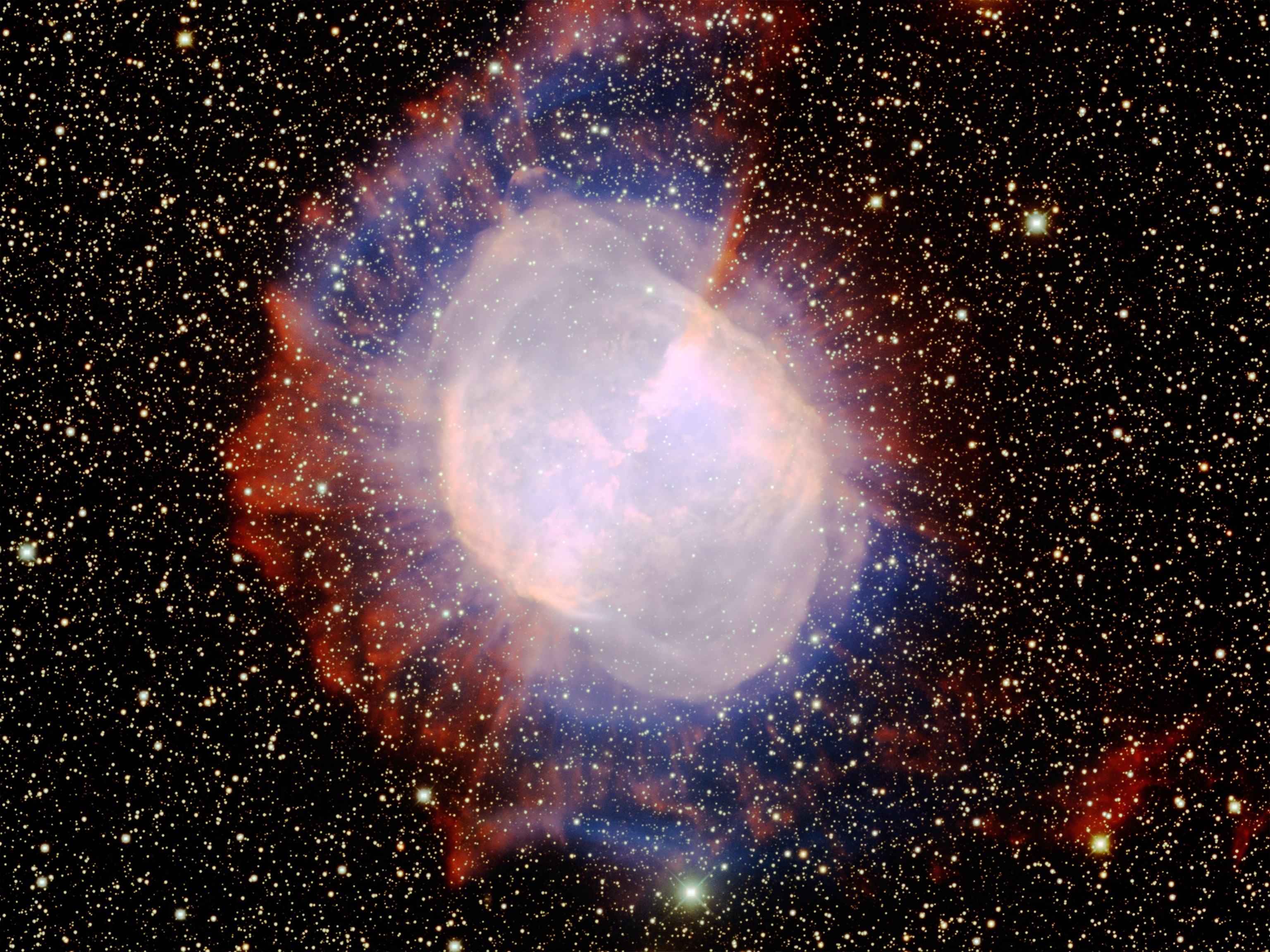
Discovered: Quartet of Quasars, a 10-Million-to-One Find
It gets stranger: The four quasars are nestled in a gigantic cloud of cold hydrogen gas that theories say shouldn’t exist either.
A team of astronomers has stumbled on a set of four quasars at the edge of the visible universe. These super-bright objects are normally scattered far and wide, but this group is packed together in an absurdly tight 650,000 light-years worth of space.
“On average, quasars are about 100 million light-years apart,” says Joseph Hennawi lead author of a paper on the discovery published Thursday in Science. “The odds against finding four so close together are ten million to one.” (Unless, of course, it’s an optical illusion).
Quasars were utterly mysterious when they were first discovered in the early 60’s. Nobody knew what could possibly create a beacon of light so bright it was visible from billions of light-years away. By now, astronomers know that they’re really gigantic black holes, swallowing gas so prodigiously that the gas heats up to millions of degrees, blasting energy out into space.
The new discovery proves that quasars still have the capacity to astonish. The quasars are embedded in a huge cloud, or nebula, of cold hydrogen gas, with a mass equal to 100 billion stars—and that doesn’t make a lot of sense either.
“If you find something theory says is very unlikely, “you either have to conclude you got incredibly lucky, or that the theory is flawed,” says Hennawi, of the Max Planck Institute for Astronomy in Heidelberg, Germany.
Strangely Uncommon
It's surprising that the quasars are so close together simply because they’re relatively rare. The black holes that cause them are common enough—virtually every large galaxy has one lurking in its core. But black holes light up as quasars only when they’re actively guzzling gas, and that, says Hennawi, is rare in a galaxy’s life.
(Just for the record, the Milky Way’s black hole, weighing in at four million suns, is too much of a lightweight to have ever been a quasar. Nearby Andromeda’s, by contrast, at 100 million suns, probably was at some point).
Astronomers know of about 100 billion galaxies in the visible universe, but only about 500,000 in the active quasar phase. Imagine that everyone on Earth owned a bright pink Hawaiian shirt, but each person wore theirs once in a lifetime, says Ohio State University astrophysicist David Weinberg.
“If you happened to see one,” he says, “you’d say ‘wow, that’s a loud shirt.’ If you If you saw two at once, you’d say ‘that’s a coincidence!’ But if you saw four,” he says, “you’d know something must be going on.” Weinberg was not involved in this research.
Birthing Quadruplets
As for the huge, cold gas cloud surrounding the quasars, it may hold a clue to the quasars' formation. Astronomers believe that galaxies were originally born when gas from the Big Bang got sucked in by clumps of dark matter—the still-unidentified substance that outweighs the visible stars and galaxies by five to one. (See A First Look at the Hidden Cosmos.)
The gas would normally heat up as it collapses—but the cloud Hennawi and his colleagues found has a temperature of only about 10,000°C. “By cosmological standards,” says Weinberg, “that’s actually pretty cold. You’d expect the temperature to be more like ten million degrees.” The gas is also much denser than theorists expect. “We have no understanding of why such a thing should exist,” says Hennawi.
It’s probably no coincidence that this unusual collection of quasars sits inside an unusual nebula. The cold gas in the nebula might be the fuel that allows the quasars to stay active and bright longer than normal, increasing the odds of shining at the same time.
Whatever’s going on, says Chris Impey, a University of Arizona astrophysicist and author of Beyond: Our Future in Space, “The mismatch with our simulations reminds us that observational cosmology is not a solved subject yet."





